
TravelingForMiles.com may receive commission from card issuers. Some or all of the card offers that appear on TravelingForMiles.com are from advertisers and may impact how and where card products appear on the site. TravelingForMiles.com does not include all card companies or all available card offers.
Some links to products and travel providers on this website will earn Traveling For Miles a commission which helps contribute to the running of the site – I’m very grateful to anyone who uses these links but their use is entirely optional. The compensation does not impact how and where products appear on this site and does not impact reviews that are published.
This is the fifth in a series of six posts in which I’m taking a closer look a the 3 big “miles for hotel stays” websites.
Part 1 – A look at the choice and quality of loyalty programs offered and a look at the selection of hotels available on the sites.
Part 2 – A look at the prices the sites are offering.
Part 3 – A look at mileage earning opportunities – USA Centric Analysis
Part 4 – A look at mileage earning opportunities – UK Centric Analysis
Part 5 – A look at what miles you should be electing to earn
Part 6 – A look at other benefits offered, positives/negatives to using these sites & a summary of the findings with conclusions.
What are Rocketmiles, Kaligo and PointsHound?
These are hotel booking sites which allow you to earn miles, in a variety of loyalty programs (predominantly airline loyalty programs), when you book hotel stays.
What miles should you be collecting?
Let’s get the obvious out of the way first: If you have a strongly preferred airline program then, clearly, it’s that airline’s loyalty points/miles you should be collecting.
But I’m not writing this for the hub-captives or the die-hard loyalists of one airline or another – I’m writing this for those who are looking around at their options and who have a genuine choice….even if they don’t realise it.
I’m going to split this post into two sections. The first section is aimed at travellers based in the US and the second section will be aimed at travellers based in the UK – feel free to skip to whichever section interests you more.
Section 1 – US Travellers:
I’m going to be taking a look at the miles you can earn from the point of view of someone who wants to redeem the miles for international travel – because that’s where some of the very best redemptions are to be had.
To keep things simple, in this exercise I’ll be using the miles you can earn through Rocketmiles to illustrate my point – not only does Rocketmiles offer the most miles (in the majority of cases) but it also offers miles in 3 major US mileage programs. In addition, all other variables are the same so the only consideration is “which miles do I elect to earn?”. If you prefer to use one of the other two sites the same logic will apply.
Comparing American, Alaska & United Earning on Rocketmiles:
Looking at the table above the first thing that leaps out is just how similar all the mileage earning rates are. With the exception of the NH Collection Giustsano in Rome all the earning rates are within 1,000 – 2,000 miles of each other – but that doesn’t mean that you don’t have to consider, carefully, who’s miles to collect.
Not all miles are equal.
Yes, the value of miles will vary from person to person according to what they want to use them for, according to how easy they are to obtain and, possibly, according to how easily they can use them. But not even a die-hard United MileagePlus fan can claim that 20,000 United miles are with as worth much as 20,000 AAdvantage miles or 20,000 Alaska miles.
Note: I wrote a blog on how I value my mileage balances last year and that could be a useful read if you’re not sure exactly what I mean.
Aside from asking you to take a look at last year’s blog post, here are a few easy way for me to explain what I mean:
A roundtrip business class fare between the US and Europe costs 100,000 AAdvantage miles at the SAAver Award level (50,000 miles each way):
(Double-click to enlarge)
 Here’s a link to the American Airlines Award Chart if you want to price-up other redemptions.
Here’s a link to the American Airlines Award Chart if you want to price-up other redemptions.
The cheapest business class redemption for the same journey on United would cost 115,000 miles (57,000 miles each way):
(Double-click to enlarge)
Here’s a link to the United Airlines Award Chart if you want to price-up other redemptions.
So, straight away, you should be able to see that the miles are not equal in value.
And if you don’t particularly want to use the miles for flights on American or United the story is more extreme when you go to redeem miles on partner airlines:
If you’d like to sample Cathay Pacific’s first class product between the US and Hong Kong it will cost you 62,500 AAdvantage miles in each direction (for a total of 125,000 miles round trip.) Compare that to the 120,000 United miles it will cost you to fly first class one way from the US to “North Asia” on one of their partner airlines (per their award chart). That’s nearly double!
So, with all that in mind, why would you elect to earn United miles instead of AAdvantage miles when the earning rates are the same?
If you don’t particularly like American Airlines or AAdvantage then Alaska is another option.
Alaska’s miles are an often overlooked option despite being very versatile. Alaska isn’t in an alliance but partners with the likes of American, Cathay, Emirates, Korean Air and more to give some very good redemption options.
You could fly a roundtrip between North America and Asia, on Emirates (that’s the long way around) in Business Class for 150,000 miles. If you don’t feel like seeing that much of the world and want to fly west to Asia, you could use 100,000 Alaska miles and fly on Cathay.
These are all vastly better award options than what you’d get with United so, unless you’re topping off a United account or are somehow wedded to United, it makes absolutely no sense to elect to earn United miles from Rocketmiles or Kaligo.
Section 2 – UK Travellers:
In part 4 I pointed out how little difference there was in the earning rates for British Airways Avios and Virgin Atlantic Flying Club miles, so you may be wondering why you need to be careful which miles you elect to earn – surely it’s all much of a muchness?
The fact is that, for a lot of people, the correct thing to do is to elect to earn neither. If you’re not topping up a Flying Club miles account to get to an award or a BA Executive Club account there is a much better option out there for most UK travellers – American AAdvantage miles.
Both Virgin and British Airways charge fuel surcharges on their awards – American doesn’t (providing you don’t use AAdvantage miles to fly on BA). So, straight away that makes AAdvantage miles considerably more valuable than either Avios (a truly woeful currency for long-haul travel) or Flying Club miles.
Another thing that should rule Virgin Atlantic out is their limited route structure and the limited number of partners they have with whom you can spend your miles. If you’re staring out with a zero/low balance and looking to earn miles for international travel you should be looking to earn miles that you can use on as many carriers as possible – and Virgin doesn’t let you do that.
American partners with British Airways via OneWorld so, generally, wherever Avios can take you so can AAdvantage miles. With that in mind let’s take a look at how many Avios or AAdvantage miles can be earned with the hotels in the test:
- With only two exceptions, you would earn a very similar number of miles regardless of which loyalty points you elected to earn.
- In the two cases highlighted in green it’s clearly advisable to elect to earn Avios as you earn considerably more.
With the exception of the two cases highlighted in green, American AAdvantage miles will be the best loyalty currency to earn for most people – and this is why:
1) As I’ve already mentioned, British Airways charge fuel surcharges on their awards while American doesn’t. All other things being equal that makes AAdvantage miles considerably more valuable than Avios.
2) Thanks to the recent British Airways devaluation and the way both airlines have set up their award charts, it take a lot more Avios to fly long-haul that it does AAdvantage miles.
Heathrow to Los Angeles One-Way (Business Class)
- 62,500 Avios (on British Airways), 75,000 (on partner airlines)
- 50,000 AAdvantage miles (on American or on partner airlines)
Heathrow to Hong Kong One-Way (Business Class)
- 75,000 Avios (on British Airways), 90,000 Avios (on partner airlines)
- 52,500 AAdvantage miles (on partner airlines)
Heathrow to Sydney One-Way (Business Class)
- 125,000 Avios (on British Airways), 150,000 Avios (on partner airlines)
- 60,000 AAdvantage miles (on partner airlines)
3) If you’re so attached to flying British Airways that you can’t imagine ever flying another airline then you can still use AAdvantage miles to do just that. You’ll still require less miles than if you were using Avios, although you would be subject to the same appalling surcharges that you’d pay when using Avios.
Some will almost certainly argue that AAdvantage is ripe for a devaluation so it’s risky collecting AAdvantage miles, but that’s a poor argument in this scenario. Yes, AAdvantage is almost certainly going to devalue at some point (possibly even soon) but so what? I AAdvantage post devaluation can’t be any worse than British Airways Executive Club is right now so you may as well collect a currency that, for the time being at least, is vastly superior to your alternative.
Following the British Airways devaluations earlier this year it’s an inescapable fact that, for very large percentage of British Airways flyers, crediting their travels to an American Airlines AAdvantage account rather than a British Airways Executive Club account makes a lot of sense – but that’s a blog for another day.
Look out for the final part in this series where I’ll take a look at any other benefits the 3 sites offer, the positives and negatives of booking through the sites and the final summary of results.







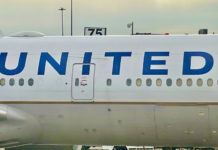
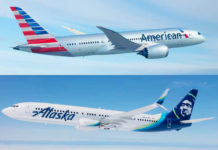

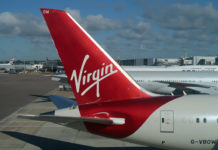
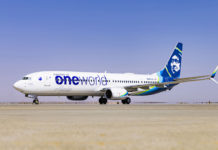

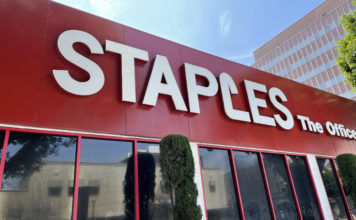
![The ideal 4 card American Express Membership Rewards team [Updated] a glass door with a picture of a man](https://travelingformiles.com/wp-content/uploads/2021/06/Amex-Centurion-Lounge-SFO-featured-741-356x220.jpg)

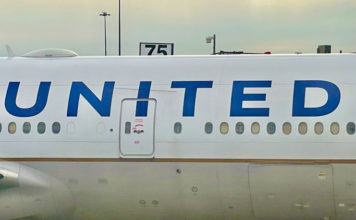







[…] Part 5 – A look at what miles you should be electing to earn […]